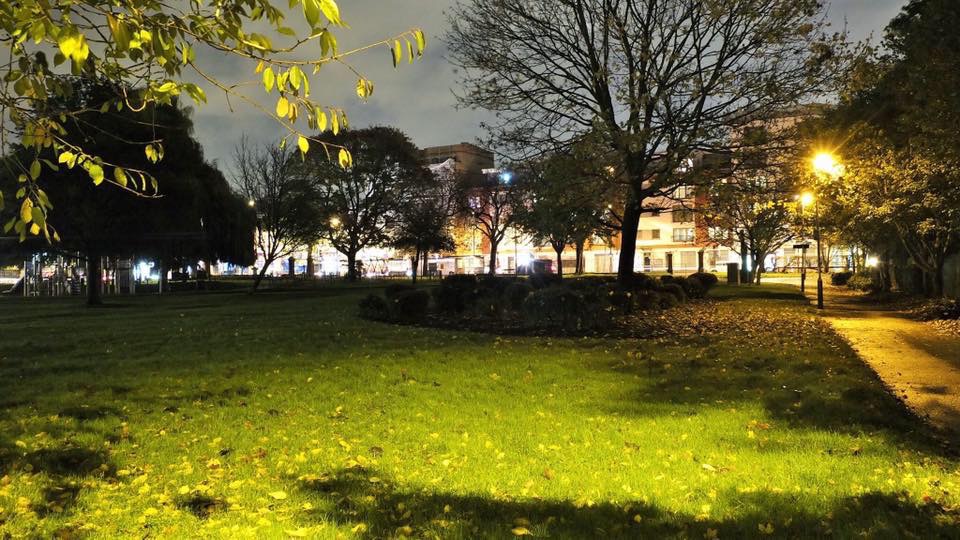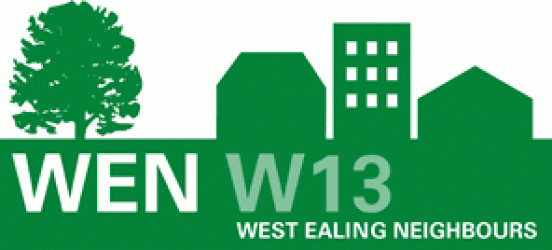Last night I attended a well run and well attended Hanwell Community Forum (HCF) meeting. The only item on the agenda was Ealing’s LDF and Ealing Council’s Steve Barton was in attendance as main presenter. Steve, an Ealing resident, is Interim Planning Policy Manager for the Council.
HCF’s Carolyn Brown opened the meeting with a short overview on Ealing’s LDF draft Core Strategy. This was most useful to the audience and was sadly lacking from the four previous Council organised LDF Public Consultation meetings. Also well worth noting is that HCF, a volunteer run organisation, managed to attract over 40 resident attendees. This was in contrast to the resident turnout at the Council’s organised meetings in Southall (20 residents) and Greenford (32 residents) – both much larger towns. It does lead one to wonder exactly on what the Council spends its annual £3 million publicity budget.
Steve’s presentation has really moved on since his first stab at this on 9th September 2009. His speech was peppered with references to how the draft LDF Core Strategy would be rejected by National Government in its current state. However the irony of this failing document set being seemingly suitable for 240,000 Ealing adults to review is seemingly lost on him.
He still bangs on about it being a short strategy document at 150 pages what in fact it’s over 300 pages long. He still continues to be confused about the development sites for the 10,000+ flats 800 metres from Crossrail Stations being already ’approved’. Take the central area of Ealing. Here we have 19 acres of putatively ‘approved’ development sites at Dickens Yard, Arcadia and Green Man Lane Estate (GMLE). Of this 19 acres less that 5 acres is ‘approved’ – at Dickens Yard only. Arcadia is the subject of a Government Public Inquiry and GMLE is at least 4 months away from an initial Planning Application.
His line on existing housing estates was to ‘knock’em down before they fell down’. This is an interesting concept and one that residents can’t easily challenge. GMLE, for example, is only 31 years old and Copley Close is even younger. One can certainly a say that over the years the maintenance at these estates has been poor. My house like 1,000s of others in Ealing is 100 years old.
The failure to include any details of social and community infrastructure to support the new 25,000+ residents was explained away by saying that a background paper on the topic would be published on the Council’s web site in Spring 2010. He said later in the meeting that there is no Local Government cash available (see below) and made the laudable commitment to not build on open green space (see below). One is then left with a large slice of unbelief about the prospect of new schools, healthcare centres, Police Stations, sport, culture and community facilities in general ever being built.
Only 45 New Homes in Central Hanwell by 2026
However the elephant in the room soon made its presence felt. Ealing’s draft LDF Core Strategy is primarily about new housing in the so-called Uxbridge Road/Crossrail Corridor. Well Hanwell gets away almost completely unscathed with just 45 new homes being built in and around Hanwell Station/Hanwell centre.
Questions were raised about social housing and the answers from Steve were a bit wishy washy. He was very explicit about there being no Local Government money for almost anything and that all the money would have to come from property developers or National Government. (With the National Debt at £824.8 billion I kind of rejected the latter option and with property developers laying off 1,000s of staff and declaring big losses the former option doesn’t look great either).
Crossrail Might Be Delayed
He was a bit iffy about Crossrail – feeling that it might be delayed and confirming that if it was then housing developments would be similarly delayed. Complaints were made about only two Crossrail trains /day stopping each way at Hanwell Station. Not all Ealing Council’s fault but after all they are supposed to represent our interests so they must shoulder some of the blame.
There were some statements made about ‘designated frontages’ which appeared to be about confining retail to specific areas. There was some colourful geographic language about Hinterlands and north/south transport improvements but Steve cold showered the latter with ‘..but who will provide the funds’.
There seemed to be some consensus about the viable transport future being all about public transport, cycling and walking. Another elephant came into the room at this point – Peak Oil – but its name never got mentioned. A resident called for a Cycling Superhighway but Steve attempted to duck that one.
Climate Change was batted into The London Plan corner as though it wasn’t a local issue.
A retired Park Ranger resident described his dislike of ‘land swap’ deals, whereby public land is ‘swapped’ for possibly less valuable/usable private land. He quoted examples and said that the net loss had not been mitigated. Steve was silent on this point. The resident was also critical that Ealing Council was already one year late in carrying out its promised footpath survey.
Peak Oil Seemingly Not an Issue
Steve eulogised about the Ealing Tories’ commitment to retaining and possibly enhancing Ealing’s green space. Quite where new schools, health centres, Police Stations, cultural and sports facilities were to built – if not on green space – was not mentioned. If we have already reached Peak Oil I can see people suggesting parts of Hanwell’s large green spaces being converted to allotments to grow food well before 2026.
Local historian David Black was disappointed that Heritage considerations had not even been mentioned. This was especially unfortunate given the amount of Heritage in Hanwell. All Steve could do was apologise about this.
Finally, there weren’t any MPs, prospective MPs; regeneration Directors or Councillors at the meeting. Maybe these absences reflect Ealing Council management team’s level of interest in the future of Hanwell.
Feedback on the draft Ealing LDF Core Strategy will still be considered but it must arrive at Steve’s office by Friday 6th November.
Eric Leach
28th October, 2009

